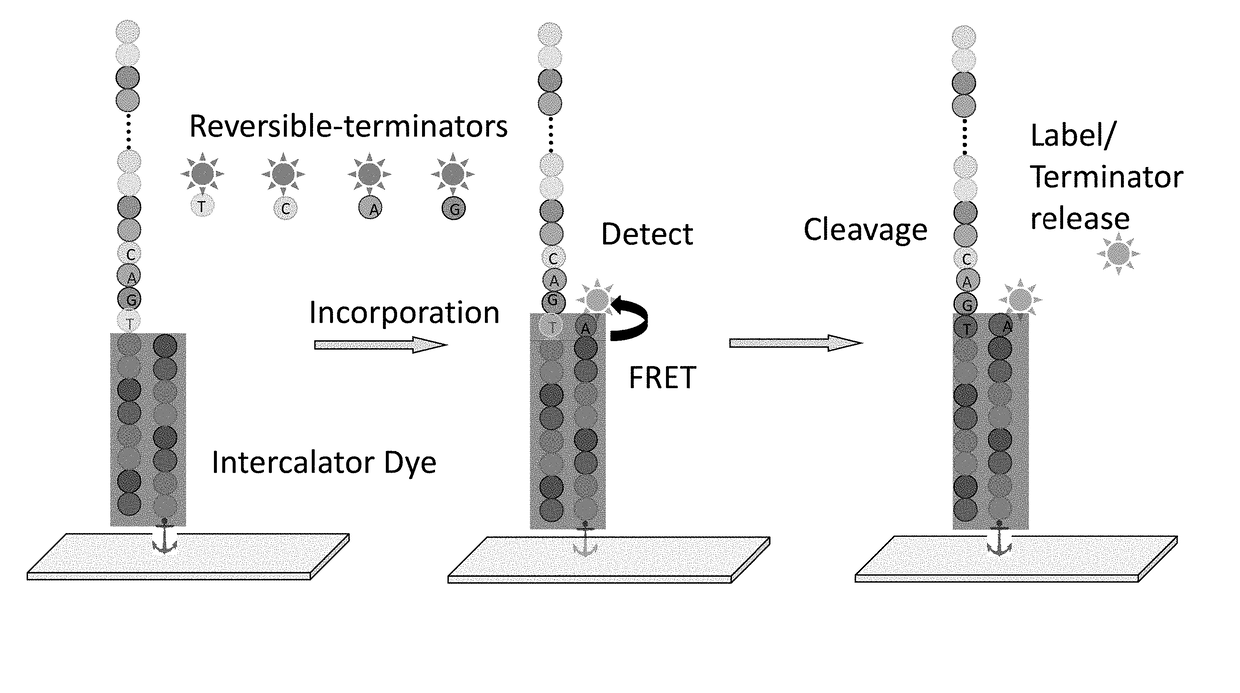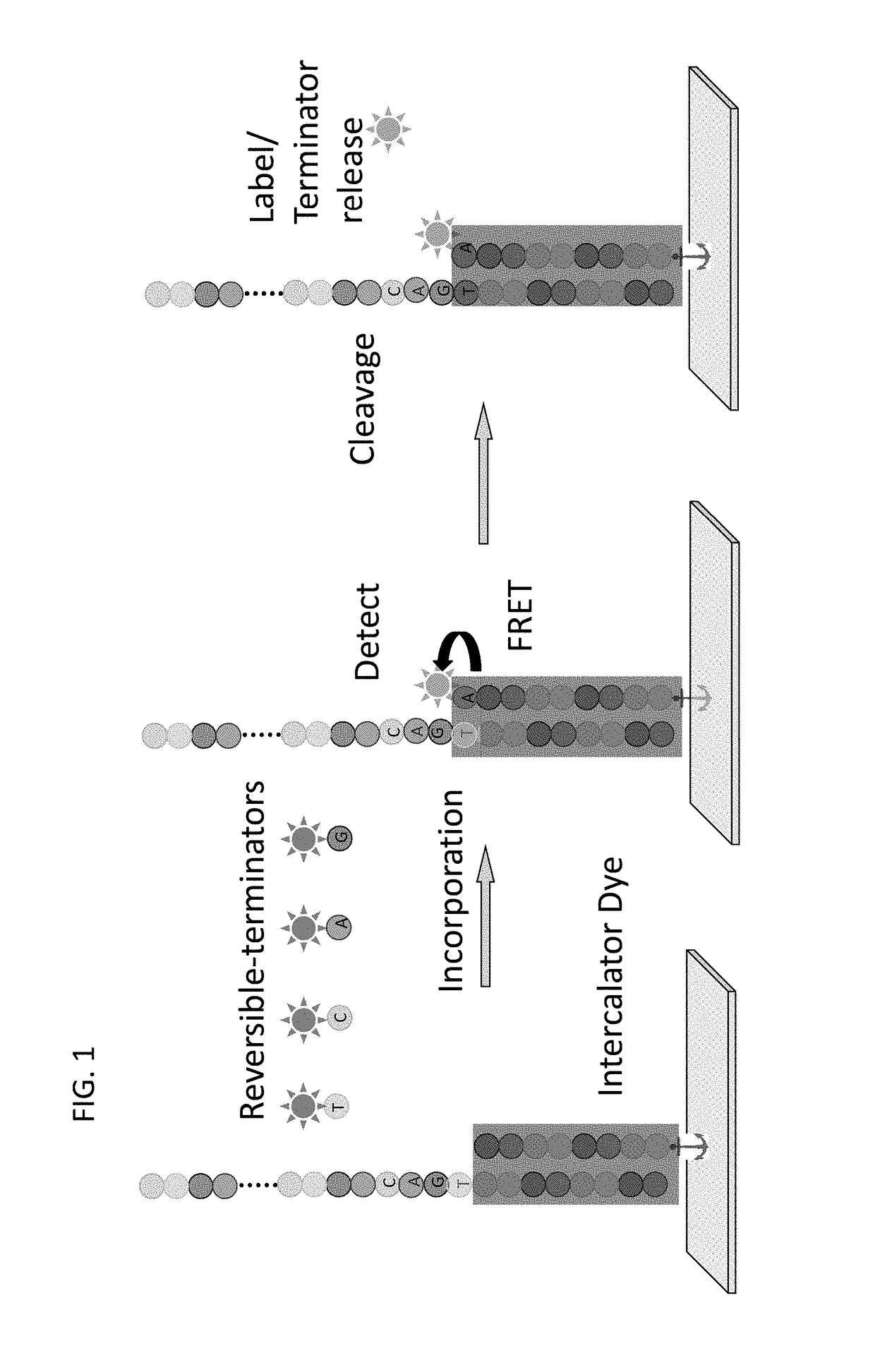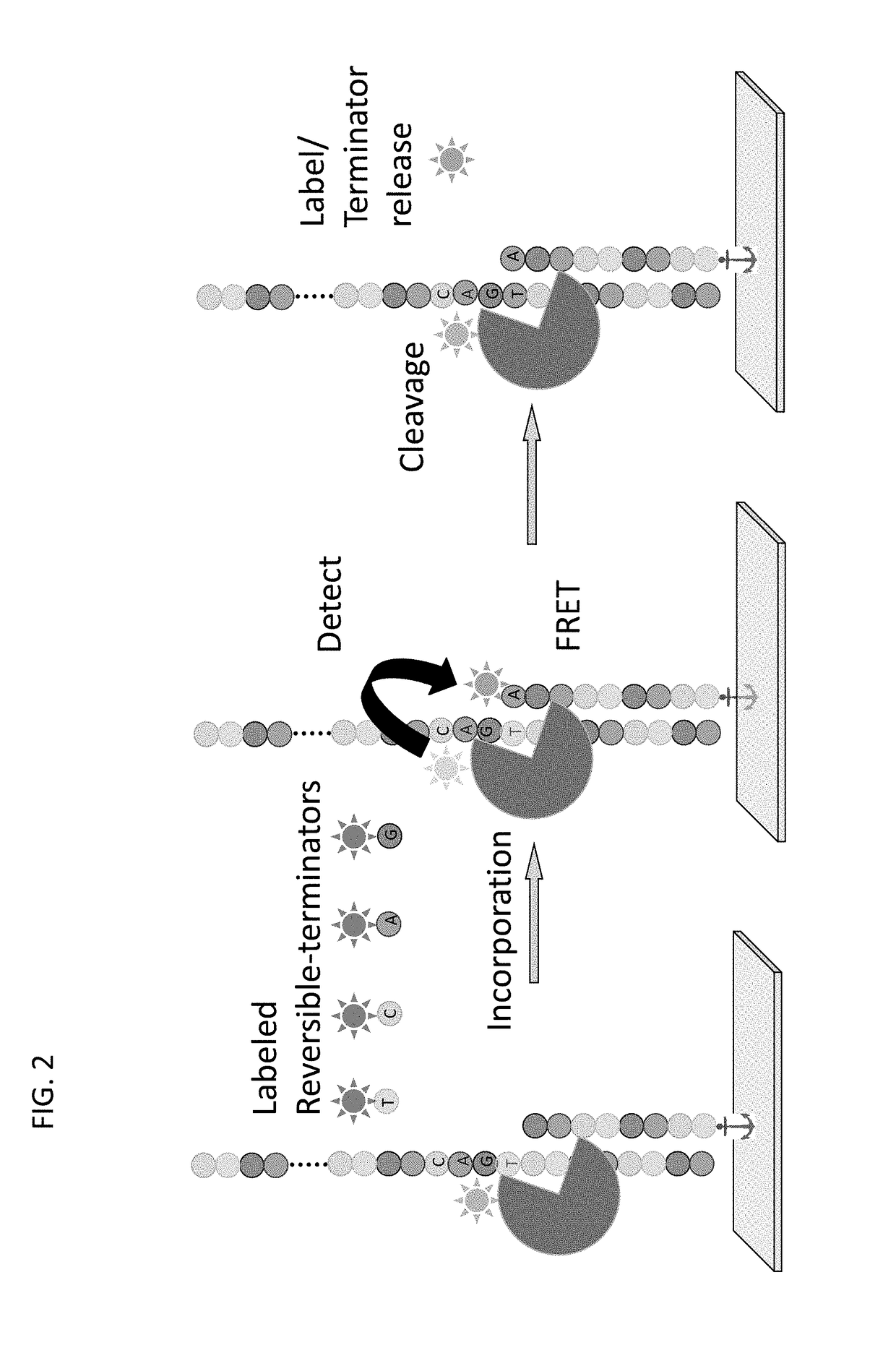Super-Resolution Sequencing
a sequencing and super-resolution technology, applied in the field of sequencing target polynucleotides, can solve the problems of time-consuming and expensive sequencing methods, limited methods in throughput, and difficulty in determining
- Summary
- Abstract
- Description
- Claims
- Application Information
AI Technical Summary
Benefits of technology
Problems solved by technology
Method used
Image
Examples
examples
[0597]It should be borne in mind that the following examples can be further optimized and the composition and concentrations of reagents used can be adjusted by those skilled in the art. Additional components may be added as known in the art and as exemplified in the patents and publications referenced in this document. As many of the required procedures are standard molecular biology procedures that lab manual, Sam brook and Russell, Molecular Cloning A laboratory Manual, CSL Press (www.Molecular Cloning.com) can be consulted. Also Eckstein, editor, Oligonucleotides and Analogues: A Practical Approach (IRL Press, Oxford, 1991) and M. J. Gait (ed.), 1984, Oligonucleotide Synthesis; B. D. Hams & S. J. Higgins (eds.) can be consulted for DNA synthesis. The following three handbooks provide useful practical information: Handbook of Fluorescent Probes (Molecular Probes, www.probes.com); Handbook of Optical Filters for Fluorescence Microscopy (www.chroma.com); Single-Molecule Techniques:...
PUM
| Property | Measurement | Unit |
|---|---|---|
| Fluorescence | aaaaa | aaaaa |
| Electric field | aaaaa | aaaaa |
| Electromagnetism | aaaaa | aaaaa |
Abstract
Description
Claims
Application Information
 Login to View More
Login to View More - R&D
- Intellectual Property
- Life Sciences
- Materials
- Tech Scout
- Unparalleled Data Quality
- Higher Quality Content
- 60% Fewer Hallucinations
Browse by: Latest US Patents, China's latest patents, Technical Efficacy Thesaurus, Application Domain, Technology Topic, Popular Technical Reports.
© 2025 PatSnap. All rights reserved.Legal|Privacy policy|Modern Slavery Act Transparency Statement|Sitemap|About US| Contact US: help@patsnap.com



